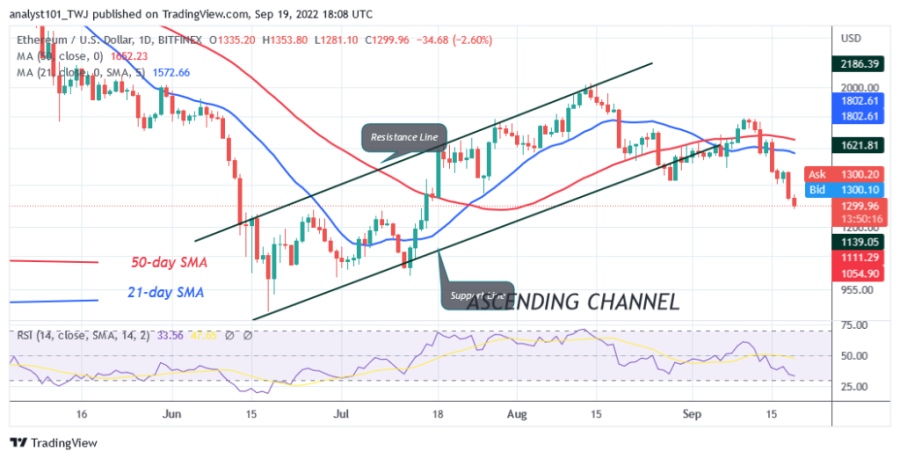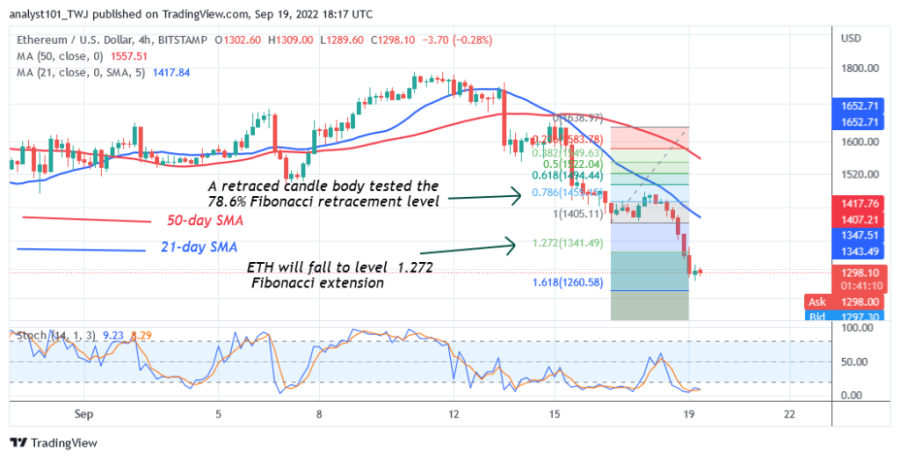Ethereum Reaches Oversold Region and Holds Above the Low of $1,281

The Ethereum price (ETH) is in a downtrend and has fallen to a low of $1,281 at the time of writing. The largest altcoin has reached bearish exhaustion after its decline from the resistance zone at $1,800. In its initial decline, Ether fell to a low of $1,406 on September 16.
Long-term analysis of the Ethereum price: bearish
The cryptocurrency returned to the historical price level of August 28, which was breached after 48 hours. Today, ETH /USD fell to the low of $1,281 as the bulls bought the dips. The current decline has reached the oversold area of the market. Buyers will likely be attracted to the lower price levels. On the upside, Ether will regain an upward momentum if the current support holds. Buyers will try to push the altcoin to the previous high of $1,800.
Analysis of Ethereum indicators
Ether is at level 34 of the Relative Strength Index for the period 14. The largest altcoin is approaching the oversold area of the market. The price bars are below the moving average lines as the market reaches bearish exhaustion. The altcoin is below the 20% range of the daily stochastic. Ether is trading in oversold territory as buyers are emerging from the current lows.
Technical Indicators
Key resistance zones: $2,500, $3,300, $4,000
Key support zones: $2,000, $1,500, $1,000
What is the next direction for Ethereum?
Ethereum has fallen back into oversold territory as the altcoin hovers above $1.281 support. Meanwhile, the downtrend from September 16 has tested the 78.6% Fibonacci retracement level with a candle retracement. The retracement suggests that ETH will fall to the 1.272 Fibonacci extension level or $1,341.49. The price action shows that the Ether reached the low of $1,281 and retraced.
Disclaimer. This analysis and forecast are the personal opinions of the author and are not a recommendation to buy or sell cryptocurrency and should not be viewed as an endorsement by CoinIdol. Readers should do their research before investing in funds.
Source: Read Full Article


